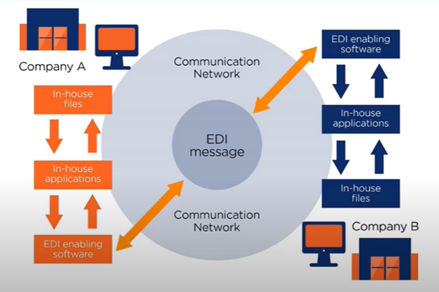There has been some talk in tech circles that electronic data interchange (EDI) use is diminishing in organizations, with APIs being preferred as the chosen replacement to suit modern technology infrastructures. While I understand the reasoning behind that idea, I don’t think it can hold up on a closer look.
Here’s why: technology and standards always change with evolving market needs. We saw this with the widespread internet boom some 25 years ago, and we’re seeing it again now with the decentralization of internet and overall digital transformation.
Today, we’re in the midst of a technology revolution involving artificial intelligence and machine learning; conceptual rethinking around digital automation; use of concepts like supply chain 4.0 and omnichannel 2.0; and pressure for on demand, real-time delivery.
Is EDI still useful, with all these new methods to transfer secure business information? Does it still get the job done in a new tech era of increasing complexity? Yes, I think so.
Some experts even point to EDI playing a significant role ahead, especially in healthcare. One estimate calls for the EDI market in healthcare to grow to some $9 billion by 2030.
Let’s re-invent the future of EDI. First, a quick refresher on how we got here.
A brief history of EDI
Electronic data interchange technology was first brought forth in the 1960s, when telex messages were converted to tape, and engineers discovered that computer systems could exchange data with other systems. This “Aha” moment eventually led to electronic manifests used in trucking, railways, airlines, and ocean shipping companies.
EDI still exists and still works well for millions of businesses, in healthcare, transportation, finance, insurance and more. EDI helps with data for transportation and data for companies with supply chain logistics. For example, right now you may be receiving, generating, and relying on tons of EDI messages.
Most of today’s electronic data interchanges runs under the common GS1 EDI standard that provides global standards for electronic business messaging. The standards provide the framework to allow trading partners to share agreed business communications between them through electronic transmission.
Companies use software that converts in-house data into a standardized format that’s sent electronically and securely to another organization. This standardized automation format is fast, accurate, and reliable. It avoids most chances for human error, so it helps to ensure the integrity of the business data exchange.

EDI still works
As B2B ecosystems continue to evolve, more companies want a more sophisticated kind of connectivity than what EDI has performed for years. Companies want real-time data, top-line security and faster ways for stakeholders to get the information they need to make decisions.
Electronic data interchanges still work, even in this new biztech complexity. Phone networks are a good parallel. Our mobile phones have changed in many ways since the flip-up phones of the early ‘00s. But the connection is still what is important. Your new iPhone still connects you to your customers, either via text or voice. The technology and business landscape has evolved, but the message matters.
That’s how EDI works today. They connect businesses through data channels, and as long as standards are equal on both ends, the connectivity works.
This is also the area where APIs have thrived. When companies started to put products and services on websites some 25 years ago for customers to conduct online business, APIs came into their own to ensure that third-party resellers and other partners could access information and gain wider access to the offerings.
EDI + API = Partners
EDI can be a good partner alongside the API stack. EDI can improve your business efficiency and improve lead times for product developments and product delivery. EDI speeds up your business communications and processes, improves data quality, reduces human error in physical transactions, and can reduce the lifecycle time for order and delivery. This helps improve business relationships, and over time, leading to better business transactions.
So while electronic data interchanges are not going away anytime soon, integrating EDI processes with APIs can make an even more profound change in your business adaptability. A likely scenario emerging in the coming years will be message-based cloud systems integrated with both EDI and API capabilities. These will likely be used for system-to-system integration in supply chains, logistics networks and financial operations.
Integrate EDI and API
Connecting EDI with APIs in a cloud platform enhances business connectivity, and improves overall business performance. This is proven by many of our customers, where such a B2B integration platform can connect digital ecosystems and technologies, create opportunities to scale up parts of the business, and help to make your system more agile and flexible. A modern EDI/API integration system can optimize your business as a whole.
As the leading IT business communications provider, Axway understands the benefits of both EDI and API capabilities. As industries evolve to meet their new sophisticated customers, so too is Axway moving forward aggressively to streamline EDI and API-driven processes, and manage and monitor APIs for enterprises on a global scale.
You don’t have to forgo your EDI processes. But integrating them into our cutting-edge B2B integration platform can help your company to continue evolving, to keep supporting your customers, and to be ready for the future.
Register for our webinar to learn more about the connected future of EDI.

Follow us on social